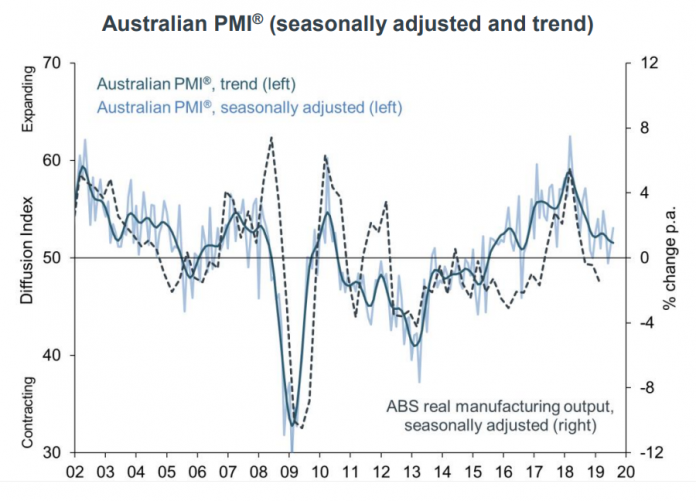
The Australian Industry Group Australian Performance of Manufacturing Index (Australian PMI) increased by 1.6 points to 54.7 in September, indicating faster growth across the manufacturing sector.
According to Ai Group’s survey, four of the seven activity indexes in the Australian PMI expanded in September, while production (down 3.4 points to 49.8), sales (down 4.8 points to 49.5) and exports (down 6.1 points to 49.6) all weakened but remained in expansionary territory.
The report also found that four of the six manufacturing sectors expanded in September, with food & beverages (up 0.2 points to 59.2) leading the way ahead of the machinery & equipment sector (up 2.5 points to 56.7), which has benefited on the back of increased demand from the mining and defence sectors.
Further, the input prices index posted its highest reading this year in September (up 5.7 points to 71.9), while the selling prices slipped into contraction (down 3.8 points to 48.9).
The survey also revealed that the average wages index increased by a further 3.5 points to 63.8 in September – the highest reading since October 2018 – indicating a higher proportion of businesses are facing wage increases across manufacturing.
Commenting on the September readings, Ai Group Chief Executive Innes Willox said:
“The strengthening of the manufacturing sector over recent months continued to build in September with a further rise in the Australian PMI,” Mr Willox said.
“Performance was most robust in the large food & beverage and machinery & equipment sectors and was supported by positive contributions from the chemicals and building products sectors.
“These areas of improvement were partly offset by further slippages in performance among metal product manufacturers and producers from the diverse textiles, clothing, footwear, paper & printing product groups.
“While sales and production were down in September, the lifts in employment and new orders are encouraging pointers for coming months – particularly as the favourable impacts of income tax cuts, interest rate falls and the lower Australian dollar continue to build,” Mr Willox concluded.




















